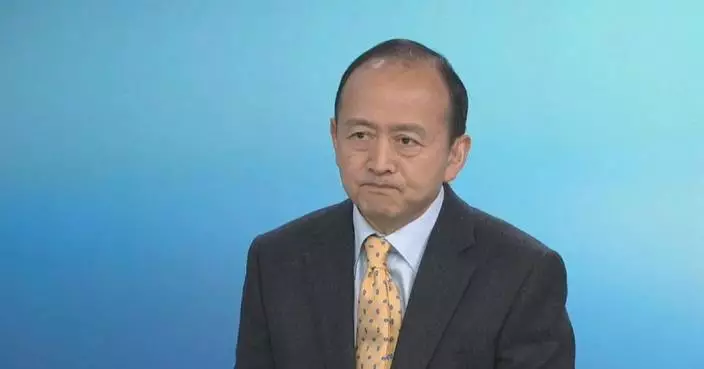An exhibition featuring Chang'e-5 lunar samples was open to the public in Beijing on Saturday.
In December 2020, the Chang'e-5 probe brought back the country's first samples collected from the moon, which marked a successful conclusion to China's three-step lunar exploration program of orbiting, landing and returning samples, which began in 2004.
"It is the first time in the country that a long-term science exhibition has been held on the theme of lunar soil sampling and groundbreaking research by Chinese scientists. We have visualized a large amount of scientific research data of the lunar sampling for popular science display, striving to make the exhibition scientific, artistic and highly valuable for science popularization," said Lin Xiao, deputy head of the Beijing Planetarium.
In addition to 0.6 grams of lunar soil brought back by the Chang'e-5, the exhibition also showcases moon rocks collected by Apollo 17 and lunar meteorites from Northwest Africa, offering valuable insights into the moon's formation and evolution.
"Chang'e stone," a new mineral discovered and named from the Chang'e-5 lunar samples is also on display at the exhibition. It is the first new lunar mineral discovered by Chinese scientists and the sixth overall discovered by humanity.
"China is vigorously developing planetary science, which is a comprehensive discipline and manifestation of national strength. The carefully selected landing area of the Chang'e-5, the meticulous research on the lunar samples brought back by the mission, and the research results have contributed to a vastly improved understanding of mineral species over the Apollo era. There are 6,000 kinds of minerals on the Earth and only about 100 on the moon. It's very difficult to discover a new mineral on the moon that we don't have on the Earth, so this is a very important discovery," said Li Qiuli, researcher with the Institute of Geology and Geophysics under the Chinese Academy of Sciences (CAS).

Exhibition of Chang'e-5 lunar sampling opens to public

Exhibition of Chang'e-5 lunar sampling opens to public









